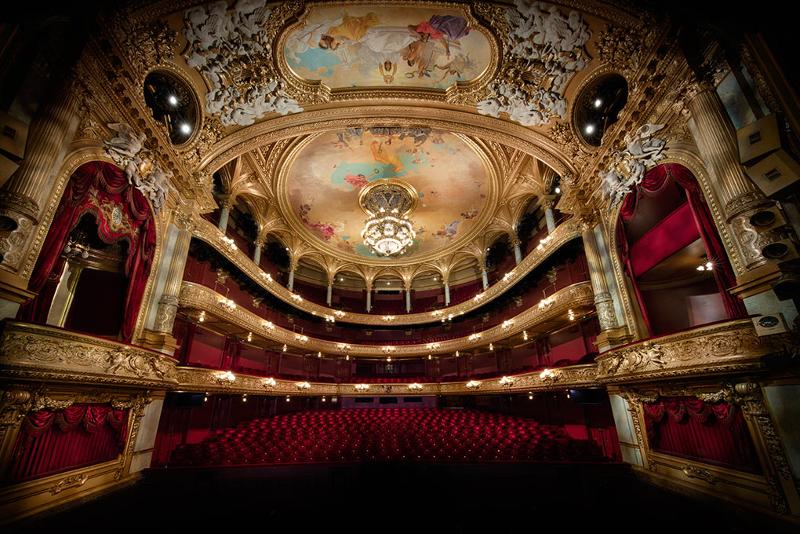Welcome to the final part of our series, where we embark on a journey through the intriguing and lesser-known genres of opera. From the heart-pounding rescue opera to the politically charged CNN opera, we will explore the unique stories and themes that have shaped these operatic genres. Join me, Jennifer Hudson, as we uncover the hidden gems of opera and delve into their captivating narratives.
Rescue Opera: Inspiring Courage in the Face of Danger
Discover the captivating genre of rescue opera, which emerged during the French Revolution, and explore how it motivated people to overcome adversity and pursue the greater good.
Rescue opera, as the name suggests, revolves around the protagonist being saved from mortal danger. This genre gained popularity in 18th century France, coinciding with the development of Republican ideals during the French Revolution. While the term 'rescue opera' was coined much later, its influence can be seen in the works of composers like Beethoven and Rossini.
The rescue opera genre is closely linked to the French Revolution and its ideologies, emphasizing anti-elite sentiments and championing the working class. These operas inspire courage, fortitude, and the pursuit of the greater good in the face of danger and societal turmoil.
Examples of rescue opera include Beethoven's 'Fidelio' and Rossini's 'William Tell'.
Radio Opera: Bringing Opera to the Airwaves
Explore the fascinating world of radio opera, an early attempt to deliver opera to a wider audience beyond the traditional theater setting. Discover how composers tailored their compositions to fit the acoustic limitations of radio technology.
Radio opera, also known as 'funkoper' in Germany, was specifically designed for radio audiences. These operas were shorter in duration compared to theatrical performances, often lasting around 15 minutes. Composers had to adapt their music and singing style to suit the medium of radio.
During the 1920s, radio opera reached its peak popularity before gradually being replaced by television opera. However, it played a crucial role in introducing opera to a larger audience and paved the way for future adaptations.
Notable examples of radio opera include 'Christkinds Erdenreise' and 'Der Lindberghflug'.
Burletta: The Comic Intermezzo of Opera
Uncover the history of burletta, a genre that originated as a comic intermezzo between scenes of serious opera. Learn how it evolved in different countries and influenced the development of comic opera.
Burletta, also known as 'comic intermezzo,' was initially introduced in the 18th century to provide comic relief during serious opera performances. In England, it quickly developed into its own operatic genre called 'ballad opera,' while in Italy, it continued to be used as interludes between scenes.
Composers like Mozart and Haydn contributed to the burletta genre, infusing it with their unique musical styles. Over time, burletta transformed into 'comic opera' and other variations, losing its popularity but leaving a lasting impact on the opera world.
Famous examples of burletta include Pergolesi's 'La serva padrona,' Haydn's 'Lo speziale,' and Mozart's 'Bastien und Bastienne'.
CNN Opera: Opera Reflecting Current Events
Delve into the world of CNN opera, a contemporary genre that draws inspiration from current events and political themes. Explore how these operas provide a dramatic retelling of pressing societal issues.
CNN opera, aptly named after the news channel, focuses on dramatic retellings of current events and political topics. This genre traces its roots back to the French Revolution and the politically motivated operas of that era.
Throughout the 20th and 21st centuries, politically topical operas have continued to make a powerful impact. They address a wide range of issues, including fat-shaming and racial harassment, sparking important conversations through the medium of opera.
Notable examples of CNN opera include 'Nixon in China' and 'The Death of Klinghoffer'.
Conclusion
Opera is a rich and diverse art form that encompasses a wide range of genres and traditions. From the inspiring rescue opera to the captivating radio opera, each genre offers a unique experience for both performers and audiences.
Through the centuries, opera has evolved and adapted to reflect the changing times, with genres like burletta providing comic relief and CNN opera addressing pressing political issues. These lesser-known genres add depth and variety to the opera repertoire, showcasing the versatility of this timeless art form.
As we conclude our exploration of the many genres of opera, we invite you to continue your journey through the fascinating history and stories that opera has to offer. Whether you're a long-time opera enthusiast or new to the genre, there is always something new to discover and appreciate.

